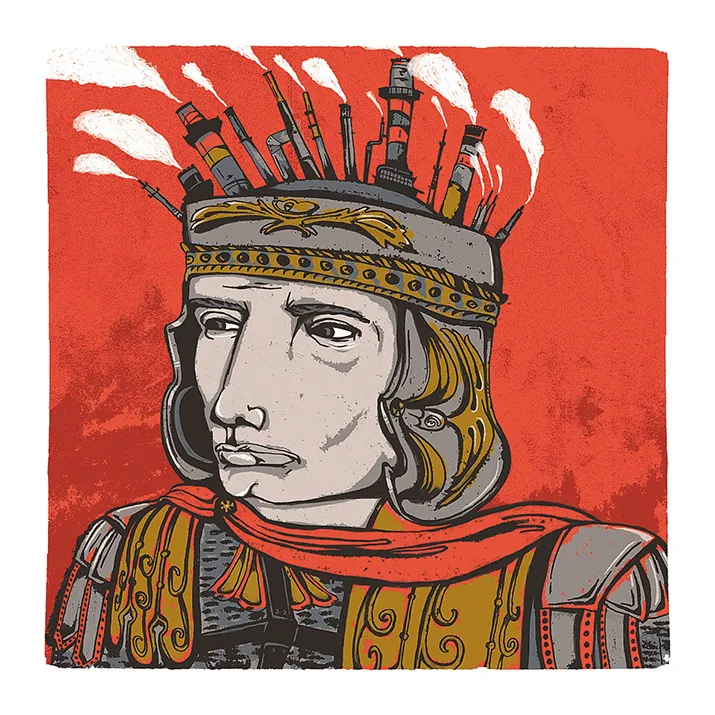Air Pollution Has Been a Problem Since the Days of Ancient Rome
By testing ice cores in Greenland, scientists can look back at environmental data from millennia past
/https://tf-cmsv2-smithsonianmag-media.s3.amazonaws.com/filer/Phenom-Classical-Gas-631.jpg)
Before the Industrial Revolution, our planet’s atmosphere was still untainted by human-made pollutants. At least, that’s what scientists thought until recently, when bubbles trapped in Greenland’s ice revealed that we began emitting greenhouse gases at least 2,000 years ago.
Célia Sapart of Utrecht University in the Netherlands led 15 scientists from Europe and the United States in a study that charted the chemical signature of methane in ice samples spanning 2,100 years. The gas methane naturally occurs in the atmosphere in low concentrations. But it’s now considered a greenhouse gas implicated in climate change because of emissions from landfills, large-scale cattle ranching, natural gas pipeline leaks and land-clearing fires.
Scientists often gauge past climate and atmosphere conditions from pristine ancient ice samples. The new research was based on 1,600-foot-long ice cores extracted from Greenland’s 1.5-mile-thick ice sheet, which is made up of layers of snow that have accumulated over the past 115,000 years.
Sapart and her colleagues chemically analyzed the methane in microscopic air bubbles trapped in each ice layer. They wanted to know if warmer periods over the past two millennia increased gas levels, possibly by spur- ring bacteria to break down organics in wetlands. The goal was to learn more about how future warm spells might boost atmospheric methane and accelerate climate change.
The researchers did find that methane concentrations went up—but not in step with warm periods. “The changes we observed must have been coming from something else,” Sapart says.
That “something else” turned out to be human activity, notably metallurgy and large-scale agriculture starting around 100 B.C. The ancient Romans kept domesticated livestock—cows, sheep and goats—which excrete methane gas, a byproduct of digestion. Around the same time, in China, the Han dynasty expanded its rice fields, which harbor methane-producing bacteria. Also, blacksmiths in both empires produced methane gas when they burned wood to fashion metal weapons. After those civilizations declined, emis- sions briefly decreased.
Then, as human population and land use for agricul- ture increased worldwide over the centuries, atmospheric methane slowly climbed. Between 100 B.C. and A.D. 1600, methane emissions rose by nearly 31 million tons per year. According to the most recent data, the United States alone generates some 36 million tons of methane per year.
“The ice core data show that as far back as the time of the Roman Empire, human [activities] emitted enough methane gas to have had an impact on the methane signature of the entire atmosphere,” Sapart says.
Although such emissions weren’t enough to alter the climate, she says, the discovery that humans already were altering the atmosphere on a global scale was “tremendously surprising.”
The discovery will compel scientists to rethink predic- tions about how future methane emissions will affect climate. “It used to be that before 1750, everything was considered ‘natural,’” Sapart says, “so the base line needs to be reconsidered, and we need to look farther back in time to see how much methane there was before humans got involved.”
/https://tf-cmsv2-smithsonianmag-media.s3.amazonaws.com/accounts/headshot/joseph-stromberg-240.jpg)

/https://tf-cmsv2-smithsonianmag-media.s3.amazonaws.com/accounts/headshot/joseph-stromberg-240.jpg)